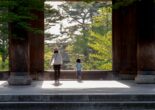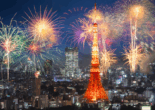Among the 33 stops of the Yamanote line, Meguro is middle-sized. This means there are plenty of things to do, but without the overwhelm of Shinjuku or Ueno. Anything from hand-roasted coffee to stately noble mansions. Read on for more.
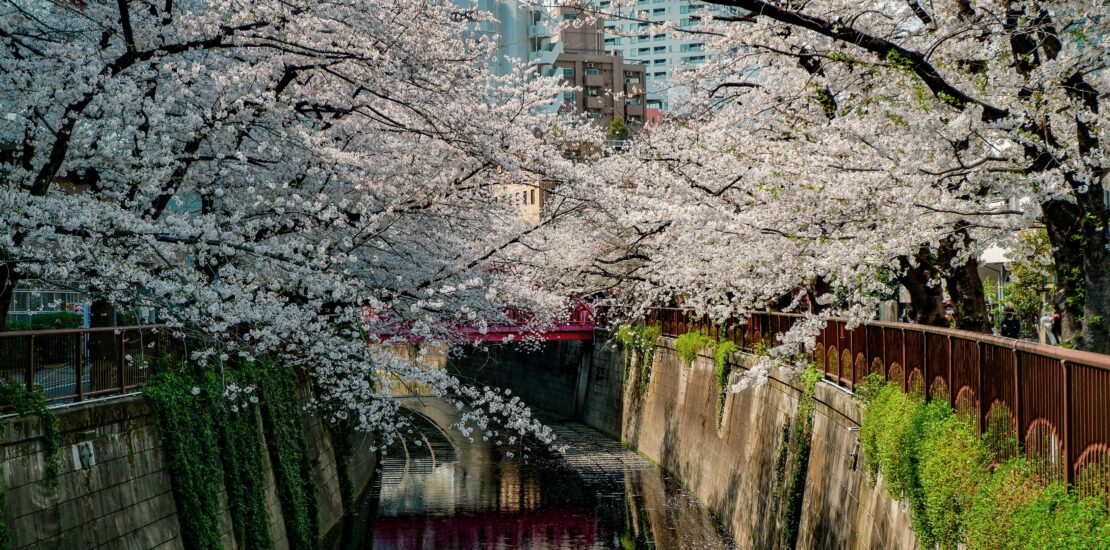
Meguro means black eye (目黒). The ward and station gets its name from a statue raised by Tenkai, an abbot advising the Tokugawa shogunate on spiritual matters in the beginning of the 17th century.
There were five statues intended to ward off evil spirits trying to infiltrate the newly constructed city, but only two have given their names to stations on the Yamanote line that circumscribes the center of Tokyo. The other is Mejiro (目白), which of course means white eyes.
Statues with divine powers
The statues were not just any statues, but a Japanese version of a Hindu deity that become worshipped in Japanese Buddhism. His eyes are one of his most important attributes, pointing in different directions, symbolizing the dualism of the universe.
You can still see the statue today, it is the main treasure of the Ryusen-ji Temple (Meguro Fudoson) in central Meguro. The temple and its surrounding buildings is intricately painted in a riot of colors, making it one of the more interesting temples to visit in Tokyo.
Among the 33 stops of the Yamanote line, Meguro is middle-sized. This means there are plenty of things to do, but without the overwhelm of Shinjuku or Ueno.
Marshmallow pink river banks
In season (which means cherry blossom season), the banks of the Meguro river from Meguro Station to Nakameguro turn to a translucent pink marshmallow cloud embracing the little waterway; the river banks are walkable from Meguro Station to Nakameguro. It is a special adventure in the evening, when the trees are lit up from below, creating a magical landscape of pink lights, shadows, and river reflections.
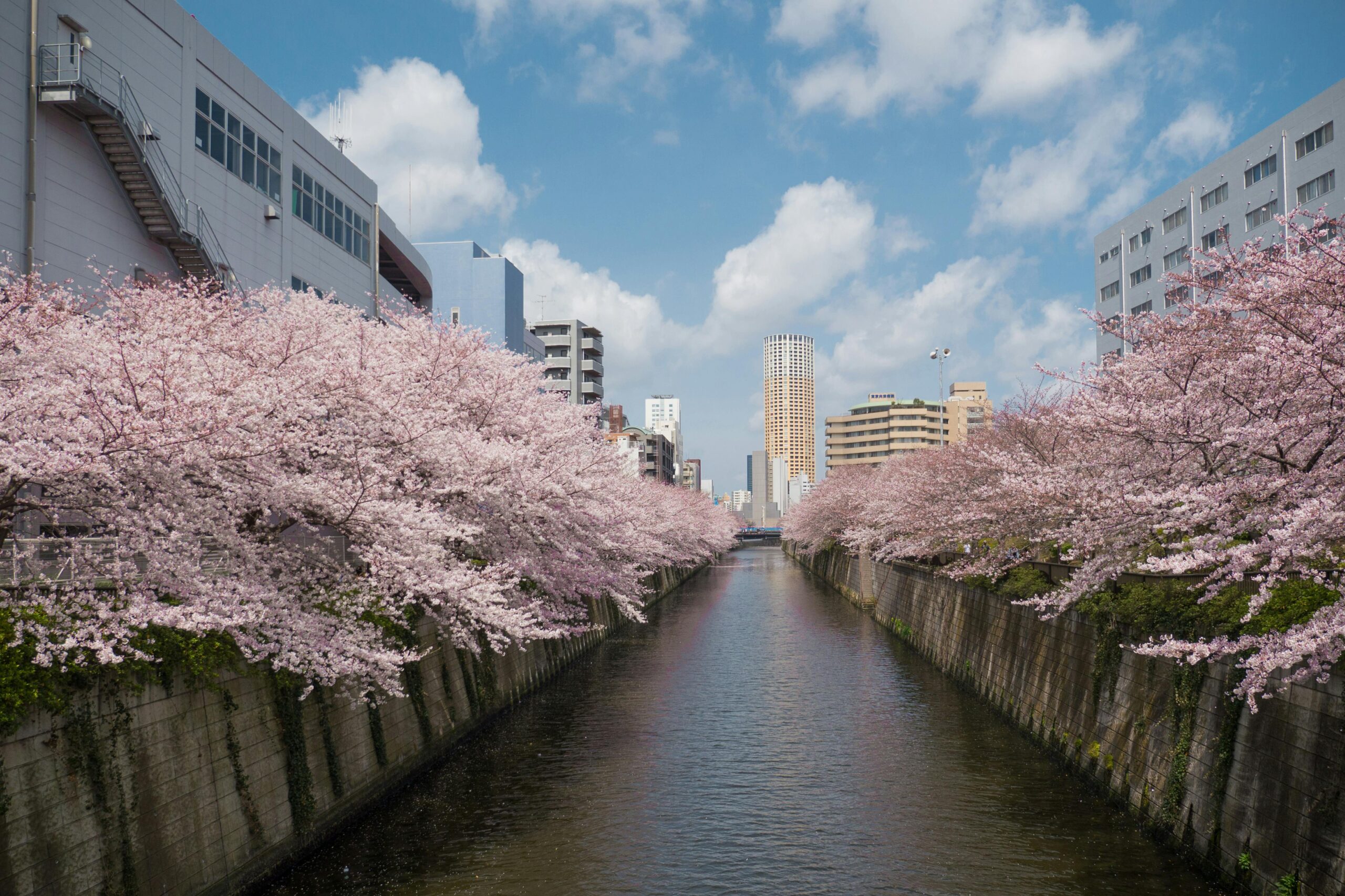
There are no restaurants or places to stop and admire the flowers until you come to Nakameguro, however. But this little city, a party capitol in normal times, transforms itself into a beer garden under the cherry trees, rewarding any thirsty riverbank hikers.

Meguro itself has more than its share of fashionable cafes. Most of the ward are upscale residential neighborhoods, which means the main streets of the little neighborhoods feel much more continental than similar neighborhoods in other wards.
Where Starbucks roasts its coffee
Meguro, however, is home to the only Starbucks in Japan that roasts its own coffee (and the fifth in the world to do so). The building, impressively designed by internationally renowned architect Kengo Kuma, is eye-catching to say the least. And while the bottom floor is dedicated to coffee, the upper floors feature tea, sweets, and a lounge space. The coffee roasted here has become so famous that Starbucks has selected it as the name for their high quality coffee bars, now to be found all over Japan. It is certainly worth a visit, but consider that it is so popular, especially in cherry blossom season, that Starbucks takes online reservations for seats, and hands out queue tickets for the terrace seating. And specifically warns visitors not to stand in the middle of the street while taking photos.

That is not the only coffee roastery in Meguro. Between the Starbucks Reserve roastery and Jijugaoka there are ten different coffee roasters, and countless more cafes. The coffee roasters are of course much smaller than the Starbuck Reserve roastery, but their products are no less delicious.
Raised above other parks
Meguro is home to a fair share of parks (where else would all that cherry blossom happen?). With hundreds, if not thousands of parks in Tokyo it is hard to find one which rises above the others, even in the sense that the Manhattan High Line park rises over other New York parks. But the Meguro Sky Garden stands above the crowd, thanks to being built on top of a decked-over expressway. This horse-shoe shaped park is not very wide, but it is 400 meters long and divided into ten zones that will maximize the amount of flowering plants over the year. If you have kids who can not sit still, turn them out to run here. Just make sure they do not bother anyone.
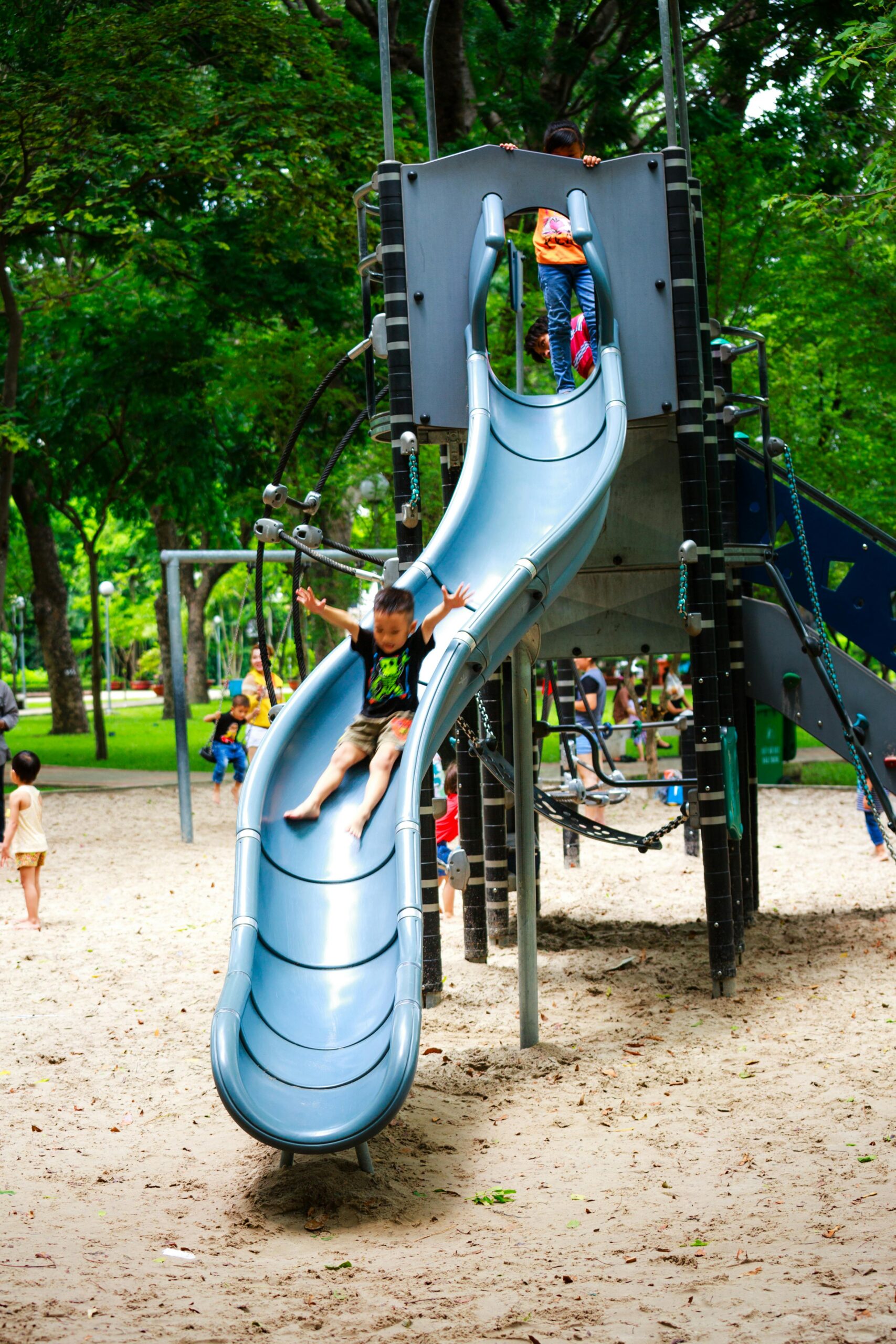
Meguro Sky Garden is perhaps the most interesting of the gardens and parks in Meguro, but there are several others around the ward, all with great cherry blossom experiences.
Art museums in parks
But Meguro Ward has something else that mist other wards in Tokyo do not: Several art museums, dedicated to not just traditional Japanese art, but also to folk art. You could start with Hotel Gajoen, a traditional hotel in eastern Meguro, home to an interior feature that is an artwork in itself: the One Hundred Steps Staircase, a staircase decorated with traditional artworks, and banquet rooms even more interestingly decorated. It may be closed for temporary visitors, but the staircase is often used for temporary exhibitions.
Not too far away is the Tokyo Metropolitan Teien Art Museum, the former residence of prince Aska, and an important art-deco building, now hosting temporary Japan-themed exhibitions. At the other side of the Teien park is the Matsuoka Museum, focusing on Japanese antique statues.
Modern fashion and costume jewellry
On the other side of Meguro station is the Sugino costume museum, founded in 1957 by designer Yoshiko Sugino and now dedicated to fashion in Japan. If you are interested in clothing and how fashion in Japan and internationally are connected, this should be an interesting visit.
Across Meguro ward, you will find another fashion-related museum, the Accessory Museum. This museum focuses on costume jewelry through the ages, and has permanent exhibitions covering different eras and cultures; it also houses temporary exhibitions. If you are interested in fashion, this is a treasure trove. In particular the museum shop.
The Komaba Museum is located in the Komaba campus of Tokyo University, one of several university campuses in Meguro-ku. This museum has two wings, one for fine art and one for natural history, that work together to create interesting exhibitions.
Where woodcuts meet impressionists
If figurative art is not your thing, you may be interested in the Tokyo Photographic Art Museum, between the Ebisu and Meguro stations on the Yamanote line. This ambitious museum covers both Japanese and international photographic arts.
Near the Naka-Meguro station is another museum you must not miss if you are interested in Japanese art. This small museum is home to a fine collection of nihonga, Japanese wood cuts made with the same techniques as the ukio-e woodcuts, but very clearly influenced by western art, in particular impressionism (which of course was heavily influenced by ukio-e). The result is a completely different art form from either; if you have never encountered nihonga before, a visit will help you make sense of the Japanese art from the early 19th century.
There is no park around the Sato Sakura museum, which is situated in an ordinary residence area. But there is a large one around the Museum of Contemporary Sculpture, which houses the outdoor collection of the museum; indoors are rotating and temporary exhibitions focused on modern sculpture.
Stately residences and farm houses
Still in Naka-Meguro, although closer to Daikanyama, is the Kyu Asakura House. This is a traditional house built during the Taisho era, surrounded by a huge traditional garden. You can not enter the house on your own, but there are guided tours.
Miyano old house natural garden is another old residence in a garden, but it is almost as different from the Kyu Asakura house as can be. Miyano is really an old farmhouse, but Kyu Asakura house is a noble residence.
Interestingly, the two are combined in a way in the former marquis Maeda mansion. When Japan rapidly evolved into a modern country at the end of the 19th century, one of the things it added (and discarded) was a nobility. The Maeda family were the feudal lords of a large province in western Japan (what is now Ishikawa prefecture), and one of the richest of the old damiyo families.
Rebuilt after the earthquake
Their family residence was completely destroyed in the Great Kanto Earthquake of 1923, which laid waste to large parts of Tokyo. At the same time as rebuilding it, the Maeda family residence was moved here.
When it was built in the late 1920’s, the stately home combined Western and Japanese architecture. The teahouse in the garden is worth an extra look. The marquis who built the house, general Toshinari Maeda, was military attache to Britain and entertained foreign visitors quite often. But when the war came, he became commander of the Japanese army in Indonesia.
That was probably the reason why the Allied forces requisitioned the house at the end of the war, although its use as residence for the commander-in-chief of the occupation forces continued even after it was returned to the Japanese government. Now it is a museum and can be booked for private receptions – as stately as those of marquis Maeda, no doubt.

